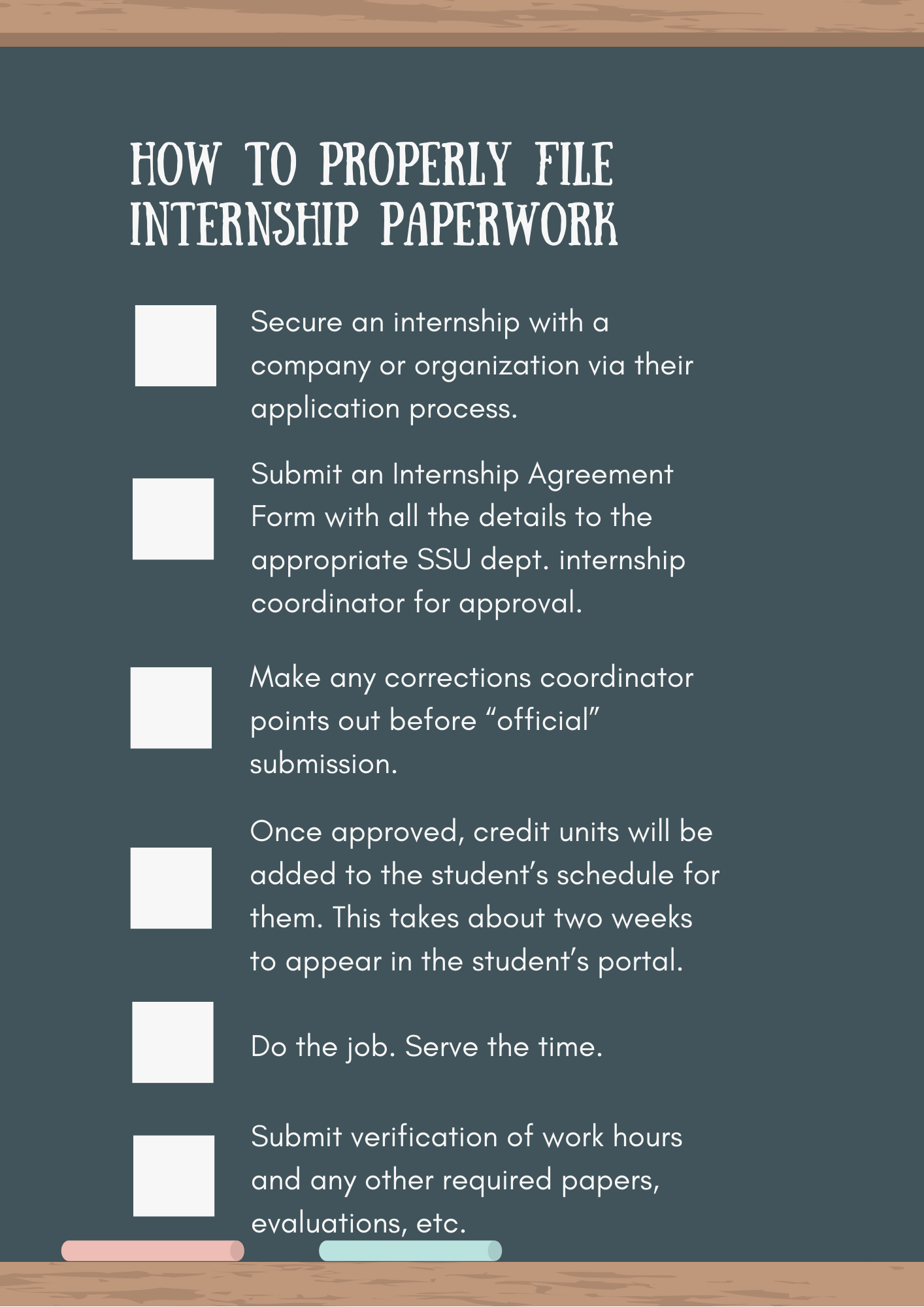Planning for Fall class schedules should also serve as a reminder of the internship or other work-experience based credits required for graduation. Summer is coming up fast, and if students want to get credit for their Summer or Fall internship, now is the time to get those arrangements lined up and locked in.
The priority registration deadline for Summer internships is July 2, and Fall internships will fill up fast, so earlier is better for those who still need internship credit units to graduate.
Students cannot receive credit units retroactively. Don’t be that student waking up in a cold sweat on July 3 to the voice of the old secretary in Monsters Inc. “You forgot to file your paperwork…”
Just like classes, tuition is required to receive credit for internships, but internship hours are generally cheaper than class tuition and are currently being offered at a 20% discount. At $240 per unit, it’s not nearly the price of a class, and Extended Education is offering $500 summer scholarships that students may apply for to possibly offset the cost.
Finding, securing, and getting credit for internship hours can initially seem overwhelming, frustrating, and tedious. This is normal. But, what is not normal, is this season of life across the globe. Internships, like the job market, are sure to be in a state of flux due to the COVID-19 pandemic.
Career Center advisor Kelsey Bensky said, “We’ve done lots of research and are finding that while some companies are already making decisions about their internship programs, many are still the process of deciding, because we are still in the midst of so much uncertainty.”
According to a survey conducted by the National Association of Colleges and Employers, about 60% of employers are not revoking any offers, though about 20% of those polled are considering it.
“There have been some internships that are canceled, but many companies are moving forward with their summer interns remotely, adjusting to project-based virtual work, and more. There are also others who have ‘freezed’ their internship program, meaning they are pausing temporarily, and decisions will be made as more information unfolds,” Bensky said.
Sonoma State’s Arts and Humanities Internship Coordinator, Hillary Homzie, emphasized this as an opportunity for students to explore avenues they may not have considered before the COVID-19 global shut-down. “I see it all the time. Whenever there’s a change, it also permits all of us to open new windows and doors in our lives,” Homzie said.
“It levels the playing field…It’s the surprising upside to a downturn,” Homzie continued. “The wonderful advantage to doing it remote…is that it allows you not to have geographical limitations.” For example, one student she knows is working with the Smithsonian Institution, a collective of 19 museums, galleries, research centers and the National Zoo, most of which are located in Washington, D.C. This is an opportunity they never would have even considered applying for if they had to add in the cost of moving across the country for an in-person internship.
Although many students may need up to four credit units total, they may take one unit at a time. One credit unit consists of 45 hours of work over the course of the semester. A four-unit internship is 180 hours of work–about 15-20 hours per week for 9-12 weeks. Depending on each department’s requirements, students may need to keep a log of their hours and duties, keep a reflective journal, write an analytic or summary paper at the end of their internship, fill out an evaluation of their experience, or some combination of similar activities.
For those students that are unsure about signing up for one four-unit internship, be it a heavy class schedule this fall or not feeling quite ready to dive in head first, Homzie recommends taking on a few smaller internships spread out over time, or exploring different areas.
In the uncertain climate across the country currently, micro-internships are trending for summer opportunities. Multiple micro-internships will require a bit more paperwork, but the benefits aren’t limited to accommodating busy schedules. Students can broaden both their skill sets and their professional networks by doing several small, remote projects.
Bensky recommends looking for micro-internships through parkerdewey.com. All of their internships are project-based, have estimated hours for completion, and most are paid and list the total project cost alongside the qualifications–all of those hours can add up to credit units with SSU.
Homzie believes there is no such thing as a mistake when it comes to internships. “Sometimes a good experience is you figuring out this isn’t your jam. This isn’t for you, even if the people are encouraging, and even if you did a great job,” Homzie said.
One of her first internships was in production for a television affiliate, and she discovered through that experience that sitting in an editing booth all day was not what she wanted to do. She was too collaborative and social to tolerate such an environment long-term. That realization led her down the path of working in education.
“We need contrast to help us, you know, create rockets of desire of what is going to feel like a good fit, where we can grow!” Homzie said. “You don’t want to find something where you think ‘I already know all of this.’ You want to find something that shows you a trajectory for a career path that gets you excited.”






































